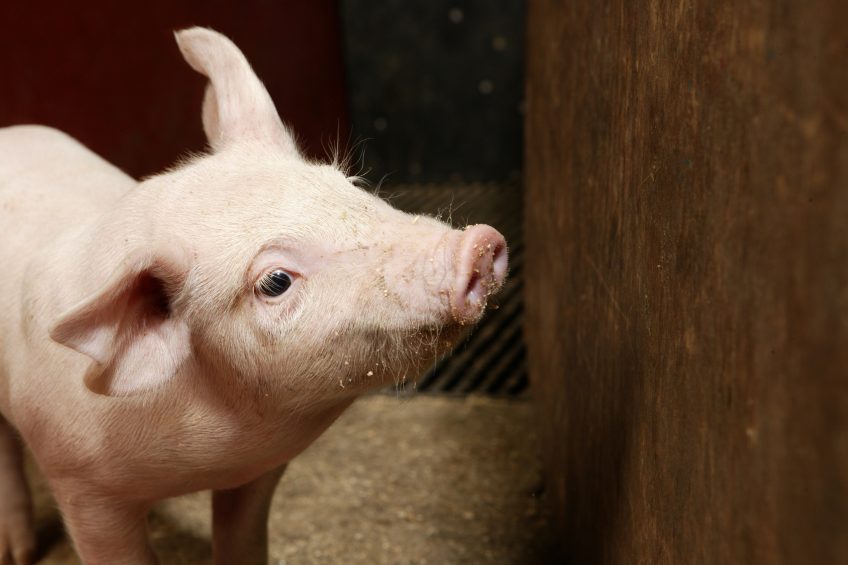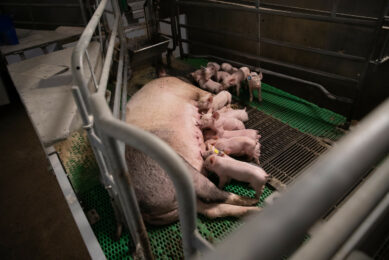Eliminating oxidative stress in pigs caused by DON

Due to the wide occurrence of DON in feed cereals and its toxicological effects in animals, the mycotoxin attracted much attention. By increasing the concentration of free radicals, DON induces an imbalance of the antioxidant capacity in pigs. It is, however, possible to counter the oxidative effects.
Feed refusal, growth retardation and even weight loss are the first symptoms of intoxication with the mycotoxin deoxynivalenol (DON). In severe cases organ damage, fertility problems, depressed immunity and increased mortality can arise. Looking at recent literature, the potential of DON to induce oxidative stress at cellular level has been a topic of big interest.
Oxidative stress
Oxidative stress is a phenomenon occurring in a cell when the concentration of Reactive Oxygen Species (ROS) exceeds the antioxidant capacity. DON induced production of ROS has been reported in several studies. By increasing the concentration of free radicals, DON induces an imbalance of the antioxidant capacity within animals.
A generally accepted effect of this imbalance is the downregulation of the expression of tight-junction proteins (Table 1) in the intestine finally leading to an increased intestinal epithelial paracellular permeability.
Another consequence is the disruption of cell growth and -differentiation and macromolecular synthesis due to lipid-, protein- and DNA oxidation in the cell.
Measuring oxidative stress
A way to visualise the status of oxidative stress in the animal is measuring oxidative stress related blood parameters. The Kit Radicaux Libre (KRL) test is a biological test that evaluates the antioxidant status of an organism by testing the antioxidant defence systems of the blood. The KRL test evaluates the total antioxidant activity of blood by measuring the time required to haemolyse 50% of the RBC exposed to a controlled free radical attack. In other words, the half haemolysis time (HT50) is the time in which half of the blood cells are destroyed or ruptured. Hence the higher this HT50, the more resistant the blood cells are against haemolysis. It is known that blood cells that are under high oxidative stress have a lower HT50.
Another parameter to measure oxidative stress is the malondialdehyde (MDA) concentration of the blood plasma. Malondialdehyde is an end product of lipid peroxidation and is therefore a marker for the oxidative stress the animal was exposed to. Measuring lower MDA blood value means lower oxidative stress.
A third test that can be used is measuring the ratio oxidised glutathione over total glutathione present in the blood. Glutathione is an important non enzymatic antioxidant present in the animal. It can appear in a reduced (GSH) and oxidised (GSSG) form. In the reduced form, it can neutralise reactive oxygen species, such as free radicals. While neutralising these free radicals, the reduced glutathione shifts into its oxidised form. Hence the higher the ratio of oxidised glutathione over total glutathione, the more oxidative stress the animal was exposed to.
Figure 1 – Illustration of the relationship between radicals and antioxidants in case of oxidative stress.

Countering DON using feed additive
With Vitafix Ultra, Nuscience has a product in its Vitafix mycotoxin binder range that will focus on the elimination of the oxidative stress caused by DON. Besides the known biotransformation of DON by specific yeast cell fractions, the solution contains anti-oxidative polyphenols to neutralise the generated free radicals by DON.
In an experimental trial 252 piglets were weaned at 26 days and divided into three groups of 84 pigs each. The first group was not challenged (negative control) whereas the other two were challenged with a 0.9 ppm DON feed contamination. This level of contamination is just below the European legal limit and without co-contamination of other mycotoxins. One of the challenged groups received 3 kg/tonne of the mycotoxin binder. Besides the known biotransformation of DON by specific yeast cell fractions, the solution focuses on the elimination of oxidative stress caused by DON by inclusion of anti-oxidative polyphenols to neutralise the generated free radicals.
At day 35 of the trial, blood samples were collected and above mentioned oxidative parameters were determined (Table 2). As expected the DON contamination clearly has a negative impact, although not significant, on all three blood parameters showing that this is a good trial model with appropriate biomarkers to evaluate the effect of DON on oxidative stress. At higher contamination levels a bigger and significant effect can be expected. In this trial however, we opted to use legally permitted levels of DON and without co-contamination of other mycotoxins. As described in literature, DON clearly has a negative impact on the oxidative resistance of the blood cells.
Vitafix Ultra significantly increased the half haemolysis time to a level even better than the negative control. Also levels of malondialdehyde (MDA) and oxidised glutathione in the blood were in favour for the group receiving the mycotoxin solution. This indicates that less lipid peroxidation occurred within the animal, with less MDA as end product, and that the polyphenols in the toxin binder have a sparing effect on the glutathione antioxidant. The similar trend for all three parameters clearly indicates a reduction of the oxidative stress when the mycotoxin solution was added to the feed.

Blood parameter confirmed in performance results
Table 3 lists the performance results of the three trial groups confirming the blood parameter results. Mycotoxin contamination, but DON in particular, will cause a reduced feed intake with growth retardation as a consequence. Compared with the negative control group, the DON contaminated group showed a decrease in feed intake (-24 g/d) followed by a decrease in average daily growth (-16 g/d) and average body weight (-0.66 kg).
Comparing the mycotoxin solution group with the positive and negative control group, shows a restoring of all parameters to the original level of the negative control. Comparing the two DON contaminated groups, a 4.5% increase of the feed intake and a 4.1% increase of the average daily growth was measured in favour of the group treated with the mycotoxin solution. This resulted in a higher end weight of 710 g and a profit of €0.53/pig.
Conclusion
On top of biotransformation of the DON molecule, the extra approach of taking away the oxidative stress caused by the mycotoxin, appears to be successful. A well-chosen mixture of polyphenols shows a good result on the blood parameters related with oxidative stress, as well as on the performances of the animal. By adding Vitafix Ultra to DON contaminated feed, it is possible to reduce the toxic effects and obtain similar results as the negative control group.











